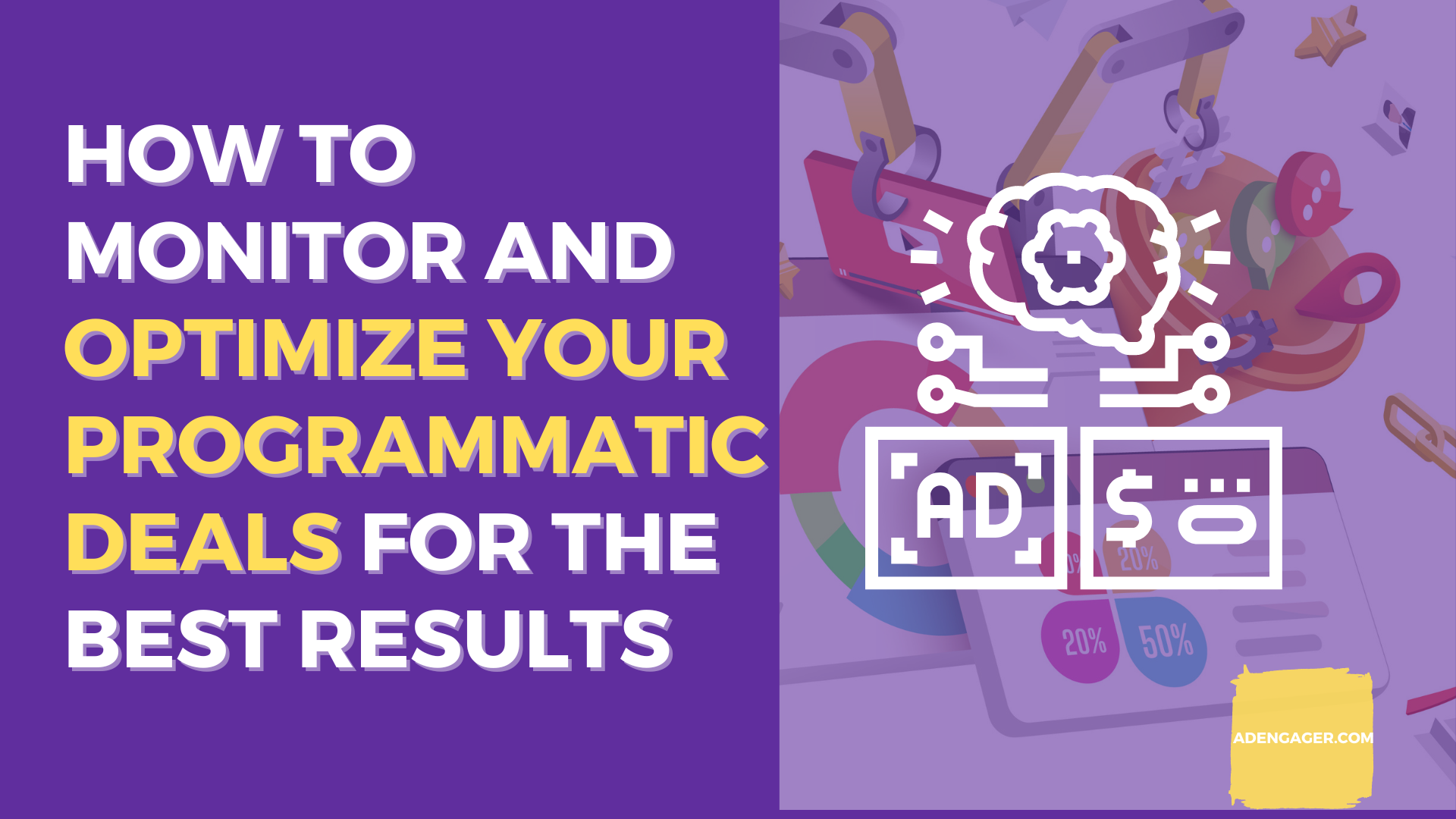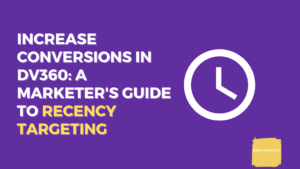Troubleshooting Programmatic Deals: Challenges & Solutions

Overview of programmatic deals
Programmatic deals have revolutionized digital advertising by offering increased transparency, improved efficiency, and better targeting capabilities. Publishers and advertisers can agree on pricing and volume of impressions in advance, providing a streamlined and data-driven approach to ad campaigns. However, despite their numerous benefits, programmatic deals can encounter challenges that require troubleshooting to ensure optimal performance.
Importance of Troubleshooting
Troubleshooting is crucial when programmatic deals don’t spend as expected. Several factors can contribute to this issue, including incorrect deal terms, integration issues between the demand-side platform (DSP) and supply-side platform (SSP), non-compliant creative, and technical difficulties. Understanding and addressing these challenges promptly is essential to prevent wasted resources and maximize revenue.
Deal Setup
Programmatic deals offer great potential for improving the performance of your digital advertising campaigns. However, it’s crucial to set up the deal correctly to ensure its success. Here’s a step-by-step guide to help beginners understand the process:
Understanding the components of a programmatic deal:
Deal Type: Identify the type of deal you want to set up, such as a private marketplace or preferred deal.
Targeted Inventory: Determine the specific inventory you want to target, such as specific websites or ad placements.
Price and Volume: Agree on the pricing structure and the number of impressions you want to purchase.
Start and End Dates: Establish the duration of the deal, ensuring it aligns with your campaign goals.
Deal negotiation and agreement between buyer and seller:
Collaborate with the seller to negotiate the terms of the deal, including pricing, targeting, and creative specifications.
Reach a mutual agreement that satisfies both parties’ objectives and aligns with your advertising goals.
Technical setup of the deal in the Demand-Side Platform (DSP) and Supply-Side Platform (SSP):
a. Configuring the DSP:
Set up your DSP to target the specific inventory outlined in the deal.
Configure the bidding strategy and maximum bid price to align with the negotiated terms.
Ensure proper integration between your DSP and the SSP to facilitate bid requests and responses.
b. Configuring the SSP:
Configure your SSP to offer the selected inventory to potential buyers.
Implement impression and click tracking mechanisms to monitor the performance of the deal accurately.
Deal testing:
Run a small-scale test campaign to verify that the deal is set up correctly and functioning as expected.
Monitor the campaign’s performance, including impression delivery, click-through rates, and any discrepancies.
Additional Tips for Setting Up Programmatic Deals:
Choose a programmatic platform that provides comprehensive features and integrations to simplify the setup and management of your deals.
Seek the guidance of experienced professionals who can assist you in negotiating and executing successful deals.
Regularly monitor the performance of your deals to identify any potential issues and make necessary adjustments.
Transparency in Programmatic Deals
Transparency plays a crucial role in programmatic deals, ensuring that both buyers and sellers have a clear understanding of the deal terms and campaign performance. Here’s a beginner-friendly overview of how transparency is achieved in programmatic deals:
Importance of transparency in header bidding and PMP setups:
Header bidding and Private Marketplace (PMP) setups enhance transparency in programmatic deals. Header bidding allows publishers to offer their inventory to multiple buyers simultaneously, while PMP deals are private agreements between specific buyers and sellers. These approaches enable buyers to see the price they are paying for inventory and help sellers obtain the best possible price.
Sharing full domain URLs in PMP deals for enhanced transparency:
In PMP deals, sharing full domain URLs provides buyers with visibility into where their ads will be displayed. This transparency helps prevent fraudulent activities and ensures that ads are shown on high-quality websites, aligning with the buyers’ brand safety requirements.
Leveraging audience listings and first-party data sharing:
Transparency in programmatic deals can be further enhanced by leveraging audience listings and sharing first-party data. Audience listings categorize websites or apps based on their audience demographics, allowing buyers to target specific audience segments accurately. Sharing first-party data, collected directly from users, enables buyers to reach their intended audience more effectively, resulting in better ad relevance and user experience.
Customizing ad displays for improved performance:
Customizing ad displays in programmatic deals involves tailoring ads to fit the specific website or app where they will be displayed. This customization ensures that ads are relevant to the target audience and seamlessly integrated into the user experience. By working closely with publishers to create customized ad displays, buyers can maximize the performance and impact of their campaigns.
Optimizing ad viewability for better results:
Ad viewability is a critical factor in programmatic deals. It measures the percentage of time an ad is viewable by users. Optimizing ad viewability ensures that ads are displayed in a way that maximizes their visibility to the target audience. By focusing on ad viewability, buyers and sellers can enhance campaign performance, improve brand exposure, and increase user engagement.
By prioritizing transparency and implementing these strategies in programmatic deals, both buyers and sellers can build trust, mitigate risks, and achieve better outcomes for their advertising campaigns.
Troubleshooting Techniques for Programmatic Deals
Troubleshooting programmatic deals is important to ensure smooth performance and address any issues that may arise. Here are some beginner-friendly techniques that can help identify and resolve problems in programmatic deals:
Monitoring performance metrics and identifying anomalies:
Monitoring performance metrics such as impressions, clicks, click-through rate (CTR), and spend is crucial. Any sudden changes or anomalies in these metrics can indicate potential issues that need to be investigated.
Analyzing bid request and response flows:
Analyzing bid request and response flows can provide insights into how bids are being made and responded to. By examining these flows, you can identify any abnormalities or errors that may be affecting the effectiveness of the deals.
Troubleshooting creative-related issues:
Creative-related issues can impact programmatic deals. Troubleshooting such issues involves checking if the creative is loading correctly and ensuring it is not being blocked by ad blockers. Resolving these issues ensures that ads are being displayed properly to the target audience.
Investigating issues related to targeting and ad relevancy:
Targeting and ad relevancy are key factors in programmatic deals. Troubleshooting targeting and relevancy issues involves verifying if ads are being targeted to the correct audience and ensuring they are relevant to the content being displayed. Addressing these issues helps optimize campaign performance.
Collaborating with DSP and SSP support teams for advanced troubleshooting:
If you encounter complex issues that you are unable to resolve independently, it is beneficial to collaborate with the support teams of your Demand-Side Platform (DSP) and Supply-Side Platform (SSP). They can provide expert assistance in troubleshooting and resolving more intricate problems.
Additional tips for troubleshooting programmatic deals:
Utilize programmatic platforms that offer robust reporting and analytics features to facilitate tracking and identification of issues.
Seek guidance from experienced professionals who can offer assistance in troubleshooting your deals effectively.
Maintain patience and persistence as troubleshooting programmatic deals can be challenging. It may take time to identify and resolve issues, but persistence will help achieve a successful outcome.
Advanced Troubleshooting for Programmatic Deals
In addition to the basic troubleshooting techniques mentioned earlier, there are more advanced methods available to troubleshoot complex issues in programmatic deals. These techniques can help identify and resolve problems that may not be easily detectable through basic troubleshooting.
Analyzing QPS (Queries Per Second) capacity of the DSP:
QPS capacity refers to the maximum number of requests a DSP can process per second. If the DSP’s capacity is exceeded, it can result in delays in ad delivery and other performance issues. Analyzing the QPS capacity helps ensure the DSP can handle the incoming requests efficiently.
Evaluating SSP response times and latency:
SSP response times and latency measure the time taken for an SSP to respond to bid requests. Slow response times can cause delays in ad delivery and impact overall performance. Evaluating these factors helps identify and address any delays or latency issues.
Investigating discrepancies between DSP-reported metrics and SSP data:
Discrepancies may occur between the metrics reported by the DSP and the data reported by the SSP. These discrepancies can be caused by factors such as latency, data errors, or fraudulent activities. Investigating such discrepancies is important to ensure accurate reporting and identify potential issues.
Leveraging roadblocks and 100% share of voice (SOV) for advertisers:
Roadblocks prevent ads from appearing on specific websites or apps, ensuring ads are only displayed on high-quality platforms. 100% share of voice (SOV) guarantees that an advertiser’s ads are the sole ones shown on a particular platform. These techniques help advertisers maintain control over where their ads are displayed, enhancing ad quality and visibility.
Utilizing client-side header bidding for better match rates:
Client-side header bidding improves the match rate between bids and impressions by having the browser send bid requests directly to SSPs. This approach reduces latency and enhances the overall performance of programmatic deals.
To effectively implement advanced troubleshooting for programmatic deals, consider the following tips:
Choose a programmatic platform that provides robust debugging and troubleshooting tools to aid in issue identification and resolution.
Collaborate with experienced professionals who can assist in troubleshooting your deals effectively.
Remain patient and persistent during the troubleshooting process, as resolving programmatic deal issues may require time and effort.
Deal Performance Monitoring and Optimization
Once you have set up your programmatic deal, it’s important to monitor its performance and make necessary adjustments to ensure it achieves your goals. This process is called deal performance monitoring and optimization, and it involves several steps.
Establishing key performance indicators (KPIs):
Start by determining the key performance indicators (KPIs) that will help you measure the success of your deal. Common KPIs for programmatic deals include spend (amount of money spent), impressions (number of times ads are shown), clicks (number of ad clicks), CTR (click-through rate), and ROAS (return on ad spend).
Continuously monitoring spend, impressions, and other metrics:
Regularly monitor your deal’s performance by tracking spend, impressions, clicks, CTR, and ROAS. Most programmatic platforms provide reporting tools to help you track and analyze these metrics.
Implementing optimization strategies based on performance insights:
As you monitor the performance metrics, you may identify areas that need improvement. For example, if your CTR is lower than expected, you might need to adjust your targeting or creative approach. Use the insights gained from performance data to optimize your campaign and make necessary adjustments.
Enhancing ad relevance and match rates through key-value targeting:
To improve the effectiveness of your programmatic deals, consider using key-value targeting. This targeting approach allows you to tailor your ads based on users’ interests, demographics, and other relevant factors. By delivering ads to the right audience, you can increase ad relevance and improve match rates, resulting in better campaign performance.
By following these steps and regularly evaluating and optimizing your programmatic deals, you can ensure that your campaigns are delivering the desired results and maximizing your advertising efforts.
Conclusion
Programmatic deals can greatly enhance the performance of your digital advertising campaigns. To ensure their success, it is crucial to correctly set up the deal and consistently monitor its performance. If a programmatic deal is not spending as expected, there are several troubleshooting steps to follow.
Recap of troubleshooting steps for programmatic deals that don’t spend:
Review the deal terms: Confirm that the deal terms are accurate and that the intended inventory is being targeted.
Verify the integration: Ensure that the Demand-Side Platform (DSP) and Supply-Side Platform (SSP) are integrated correctly, and the deal is properly configured in both platforms.
Audit the creative: Check that the creative meets the deal’s requirements and is being delivered correctly.
Monitor performance: Track the performance of the deal and identify any potential issues or discrepancies.
Collaborate with support teams: If troubleshooting steps don’t resolve the issue, reach out to the support teams of the DSP and SSP for further assistance.
Emphasizing the importance of transparency, optimization, and collaboration:
Transparency, optimization, and collaboration play vital roles in the success of programmatic deals. Transparent communication with all parties involved helps prevent fraud and ensures that both buyers and sellers benefit from the deal. Regular optimization of your deals improves their performance and overall outcomes. Collaboration with your partners allows the sharing of insights and best practices, fostering mutual success.
Encouraging ongoing monitoring and optimization for successful programmatic deals:
Once your programmatic deals are established, it is essential to continually monitor and optimize them. Regular monitoring enables you to maintain peak performance and maximize your investment.
By following these guidelines, you can ensure the success of your programmatic deals and achieve better results in your digital advertising campaigns.
Note: The outline has been revised to incorporate the additional points you provided. The new sections address the importance of transparency in programmatic deals, leveraging audience listings and customized ad displays, optimizing ad viewability, leveraging roadblocks for exclusive access, and improving ad relevance and match rates. These points provide valuable insights and strategies for troubleshooting programmatic deals and enhancing their performance.






